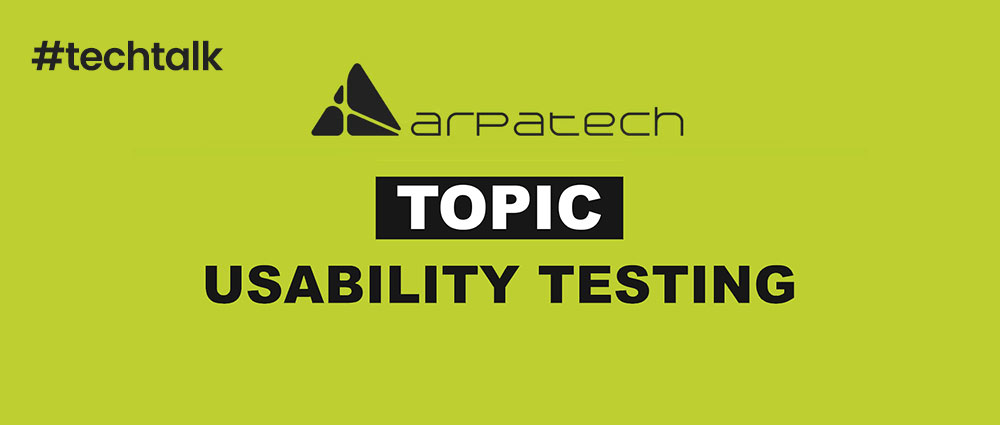An overview of Usability Testing

Most of the time when a user tries an app, he or she gives it a single try to judge if the app works fine. In one go, they decide whether they want to use the app. If the app does not suit their needs or has issues, the user will not care about the app or the hard work you have put into it eventually, it will be discarded.
Therefore, it is imperative for you to make a smooth and highly functional user experience which is where usability testing comes in. Before we proceed, we need to understand what usability testing is.
What Is Usability Testing?
Usability testing is a procedure that is carried out beforehand to check how the app works with real users.
During a usability testing session, a researcher (also known as facilitator or moderator) asks the participants to carry out a few tasks. Mostly the tasks comprise a certain interface. The researcher then observes every participant while they complete the task and later on, their feedback is required over it.
When the usability testing is conducted, every problem and confusion a participant encounters are taken into consideration. The problems are analyzed on the basis of which designs are critically examined. If more people encounter the same issue, it is suggested to formulate solutions for those usability issues.
What is the Purpose of Usability Testing?
Usability testing is performed to achieve a few goals which are:
- Uncover problems
- Discover opportunities
- Learn about users
Uncover Problems
The first purpose of usability testing is to unveil the problems a participant or a user might be having. The design-based issues are strictly monitored to understand the underlying problem that can be fixed to help enhance the app.
Discover Opportunities
It is certain that when a problem is discovered it will automatically open the door of learning for the user. Efforts are then made to improve the designs to strengthen the overall progress.
Learn About Users
Another purpose that unfolds with the help of usability testing is learning about the users. When your participants perform a task and encounter problems, you will learn their behavior and pattern. It will educate you of the concerns that may or may not come across to your target market when the app or your product is officially released.
Basic Element of Usability Testing?
The entire usability testing activity involves a few important elements that are the pre-requisites of the tests such as
- Facilitator
- Tasks
- Participants
Facilitator
The purpose of a facilitator is to be a guide. He or she is there to help the participants throughout the testing process. They are like an invigilator during the exams who examines students’ moves, their behaviors and keep an eye on them. A facilitator is responsible for understanding the problems that a participant comes across.
The job of a facilitator is to make sure that the test results are valid and high in quality. They have to make sure to not change or influence the behavior of participants which is a tricky job as it is easy to lose this balance.
Tasks
Tasks are the activities that a participant has to perform. They are the evaluation criteria of the app that is developed. With the help of bringing in realistic tasks and how a participant performs them, it is assessed whether the app is worth the user’s time.
Tasks are mostly open-minded and specific research questions are designed according to the app and usability testing.
Participants
Participants are the players in the usability testing. They study the product or the service that is there to be provided and put forward their issues regarding the tasks. A participant’s feedback is extremely important as the whole testing process primarily depends on it.
The condition of being a participant is to be a real user of the product or services meaning that the user must have previously used the products or services in their lives. A participant may also have a similar background to be able to target the user group.
Mostly, the facilitators ask the participants to explain their actions as they performed every task. This approach aids the facilitator in understanding the participant’s purpose, thoughts, and behavior.
Types of Usability Testing
There are two types of usability testing
- Qualitative usability testing
- Quantitative usability testing
Qualitative Usability Testing
Qualitative usability testing highlights the insights and anecdotes on how the product or service can be used by the users. It is best suited for discovering the problems of the user experience which helps improve the service or product. Qualitative usability testing is more commonly used as compared to quantitative usability testing.
Quantitative Usability Testing
It focuses on the evaluation parameters of the user experience. This usability testing is used to assess the benchmark for the product or services.
There two most important and common metrics for quantitative usability testing:
- Task success time
- Time on task
Bottom Line
Remember that usability testing is here to give you a user’s perspective for many product-based or app-based issues. It helps you look at the issues differently and ensures that no minor or major errors slip away from the development team.
Arpatech
Latest posts by Arpatech (see all)
- How to Choose the Right Software Development Company in Dubai - July 15, 2024
- Optimizing Last-Mile Delivery for E-Commerce Fulfillment: Top 4 Keys to Customer Satisfaction - July 9, 2024
- Best Tools And Resources For Startups – A Complete Guide - February 24, 2022

 Careers
Careers


